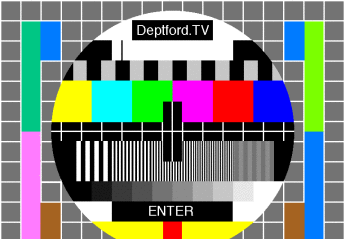 Just returned from a week away at Transmediale in Berlin, ‘Capture All’ where reSync co-habited with a set of social forum and offline network workgroups to explore respective exhaustion with social media, find fresh approaches to localised practice, celebrate a sense of disconnectedness as well as reunite old friends and baptise new.
Just returned from a week away at Transmediale in Berlin, ‘Capture All’ where reSync co-habited with a set of social forum and offline network workgroups to explore respective exhaustion with social media, find fresh approaches to localised practice, celebrate a sense of disconnectedness as well as reunite old friends and baptise new.
 So, in a noisy and overloaded foyer environment, we bumbled through a few hours of strained explanations and half understood activities until the 16 or so attendees clicked to our reGroove to spark up some add-hock badge pressing and kitten synchronisation.
So, in a noisy and overloaded foyer environment, we bumbled through a few hours of strained explanations and half understood activities until the 16 or so attendees clicked to our reGroove to spark up some add-hock badge pressing and kitten synchronisation.
 To be honest we have performed better than this but despite all, some delight and pleasure was expressed by many involved! Our ‘reSync All‘ workshop could have well been called ‘reCapture Transmediale’ in acknowledgement of the sense shared by many, on our self surveillance and semi consciousness of the issues exhibited. Elsewhere, more earnestly expressed anxiety and abstractions were deliberated over until the jitter cut of one session on another bewildered and perplexed YT.
To be honest we have performed better than this but despite all, some delight and pleasure was expressed by many involved! Our ‘reSync All‘ workshop could have well been called ‘reCapture Transmediale’ in acknowledgement of the sense shared by many, on our self surveillance and semi consciousness of the issues exhibited. Elsewhere, more earnestly expressed anxiety and abstractions were deliberated over until the jitter cut of one session on another bewildered and perplexed YT.
 Out in the bar, on the terrace and about town the conversations flowed more realistically from where we eventually dragged our soles through to each new day reset and rarified for another go. There were no midnight trains (too early) but trawls through the 90’s ‘scape of tobacco overload and tinnitus trials. No massage but a shrinking scrape with urban imagination and cultural preposterousness.
Out in the bar, on the terrace and about town the conversations flowed more realistically from where we eventually dragged our soles through to each new day reset and rarified for another go. There were no midnight trains (too early) but trawls through the 90’s ‘scape of tobacco overload and tinnitus trials. No massage but a shrinking scrape with urban imagination and cultural preposterousness.
Just before leaving we popped over to Tactical Tech for lunch and final farewell to hosts Oliver and X Londoner Adam.. yes we ran all the way to the airport.. Cheers All !


 Join us in the lobby area of Haus der Kulturen der Welt on Friday 30th January to make sync code badges and configure your media files, messages and phone things to reSync @ Capture All.
Join us in the lobby area of Haus der Kulturen der Welt on Friday 30th January to make sync code badges and configure your media files, messages and phone things to reSync @ Capture All. Pick up a flyer sheet and claim a reSync ‘key’, print posters and press your own badges. Each badge features the unique QRcode to promote media from your smart phones, tablets and pc’s using Bit Torrent Sync
Pick up a flyer sheet and claim a reSync ‘key’, print posters and press your own badges. Each badge features the unique QRcode to promote media from your smart phones, tablets and pc’s using Bit Torrent Sync